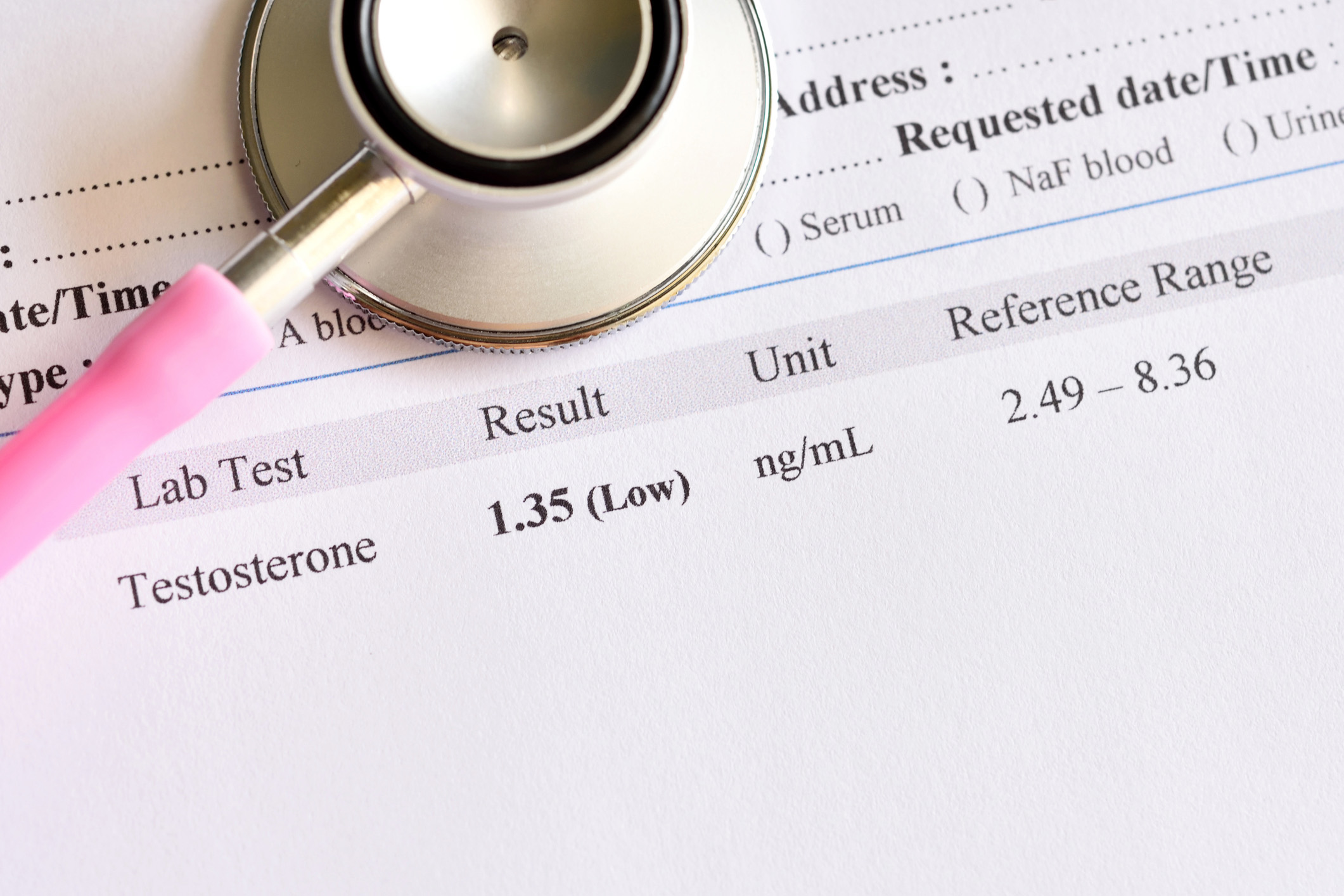Low Testosterone
Testosterone is a male sex hormone produced by the testicles. It contributes to sperm production, muscle and bone health, hair growth, fat distribution, making red blood cells, and maintaining sex drive and erections.
Some men have low testosterone levels—Testosterone Deficiency Syndrome (TD) or Low Testosterone (Low-T). Although the symptoms are generally related to aging, they are also associated with significant hormonal alterations.

Low Testosterone Symptoms
Symptoms that may be a sign of low testosterone include:
- Low libido (sex drive)
- Sexual dysfunction, including erectile dysfunction and infertility
- Decrease in muscle size and/or strength
- Low bone mineral density, resulting in increased bone fractures and height decrease)
- Loss of body hair
- Emotional changes, such as depression
- Low energy / fatigue / poor concentration / sleep disorders
Causes of Low Testosterone
Whilst testosterone levels may naturally start to gradually decrease in men in their 30s and 40s, there are other causes of low testosterone that are not necessarily related to the natural aging process. Some factors include:
- Low thyroid function
- Obesity
- Chronic diseases like diabetes and hypertension
- Testicular injury
- Testicular cancer
- Infection (HIV/AIDS)
- Abnormalities in the glands in the brain that control hormone production and balance
- Side effects from medical treatments like chemotherapy
- Liver or kidney disease
Low Testosterone Diagnosis
Low testosterone can be diagnosed with a simple blood test to check hormone levels. If evidence of unusually low levels exists, the doctor will consult your medical records and conduct examinations to uncover any underlying causes and rule out other conditions.
Low Testosterone Treatment Options
The most common treatment for low testosterone is hormone therapy. Testosterone replacement therapy (TRT) uses synthetic testosterone to treat symptoms and may also help with bone and muscle health. TRT can be given via pills, injections (in-office or at-home), testosterone pellet implants (TestoPel—where the pellets are placed through a small incision in the skin of the buttock), and transdermal (through the skin) hormone gels and patches. Lifestyle modifications (sleep, weight loss, activity, stress management) are key to receiving good results when undergoing TRT.
Why should you choose Dr Colin Teo to perform Low Testosterone treatments?
Dr Colin Teo is the Founding Head of Khoo Teck Puat Hospital’s Urology Department, with years of experience in minimally invasive keyhole surgery, operating with precision surgical techniques. Many fellows have trained under his mentorship. He did a Fellowship in EndoLaparoscopy and Andrology at St James’ Hospital in Leeds, UK and was sponsored for a Senior Healthcare Medical Development Program (HMDP) in Advanced Laparoscopic and Robotic Surgery at University of Southern California (USC) Keck Hospital in Los Angeles, USA. Dr Teo is also the President of the Society for Men’s Health.
Seek recommendations on suitable treatment options for low testosterone (PE) with Colin Teo Urology. Contact us to book an appointment today.